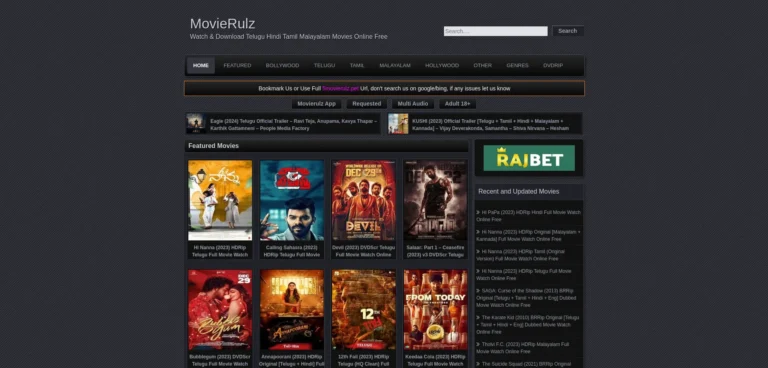Social media marketing has become an essential strategy for a wide range of small businesses. Despite its widespread adoption, many businesses still struggle to utilize these platforms effectively.
According to eMarketer, a significant portion of small businesses—53 percent—rely on social media as their primary tool for online marketing.
Another survey by eMarketer reveals that 40 percent of small to medium-sized businesses invest in social media advertisements to boost brand awareness and drive revenue.
Though there’s ample opportunity for creativity in campaign planning, there are also several common pitfalls that small businesses should avoid.
Table of Contents
Toggle1. Attempting to Utilize Every Social Media Platform

There are numerous social media networks available today: Facebook, Instagram, LinkedIn, Twitter, and Pinterest, to name a few. While these platforms offer valuable opportunities, utilizing all of them simultaneously may not be effective.
Spreading resources too thinly across multiple networks can result in subpar performance on each platform. It’s advisable to begin with one or two key social media sites and focus on mastering them.
Start by building a strong community and developing a solid social media strategy. Once a robust presence is established on these initial platforms, exploring additional networks becomes manageable and more effective.
Why It Matters
- Resource Management: Managing fewer platforms allows for better allocation of time and effort, ensuring higher quality content and engagement.
- Specialized Strategies: Different platforms require different strategies. For example, LinkedIn is more suited for professional content, while Instagram is ideal for visual storytelling.
- Community Building: A focused approach helps in creating a more engaged and loyal community.
2. Posting without A Clear Strategy

It’s easy to waste time on social media by sharing content that doesn’t support your goals. To avoid this, outline your strategy and ensure your content aligns with it. When crafting messages, consider these questions from your ideal client’s perspective:
- “What’s in it for me?” (Provide useful information for their business or personal life).
- “Can you help me with…?” (Address a common issue).
- “How does this compare to…?” (Evaluate a product or service).
By keeping your strategy in mind and focusing on helpful, relevant content, you can engage your audience more effectively.
3. Posting Too Much or Not Enough
Posting frequency on social media lacks a definitive rule, as the right amount depends heavily on your specific audience and brand. Research provides guidance on optimal posting times, but personal experimentation is essential. Social media expert Michael Stelzner suggests that high-quality content will always find its audience regardless of timing.
Key steps include:
- Crafting a strategic plan
- Prioritizing high-quality, engaging content
- Monitoring and analyzing post-performance to fine-tune your strategy
Consistency in posting can enhance your visibility while over-posting may lead to audience fatigue. Finding the balance requires regular adjustments and attentive monitoring of your audience’s reactions and engagement metrics.
4. Using Social Media as A One-Way Tool
Social media thrives on two-way communication. Utilizing it merely to broadcast messages limits its potential. Engaging users in meaningful conversations can lead to stronger relationships with customers, reputation management, and valuable insights into market needs.
Key Benefits of Two-Way Communication:
- Audience Connection: Building deeper relationships with your audience.
- Reputation Management: Addressing and managing public perception.
- Market Insights: Gaining knowledge about customer needs and industry trends.
As expert marketer Jeff Zabin suggests, generating actionable insights from social listening involves creating structure around unstructured data. By actively listening to the market, competitors, and industry influencers, businesses can discover more effective ways to leverage social media.
5. Ignoring Other Businesses and Accounts
Active participation in social media requires interaction with others in the industry. Competitors, sponsors, and influencers each have their own audiences and influence.
Rather than operating in isolation, businesses should engage by sharing others’ posts, commenting on their updates, and collaborating. This broader interaction can help tap into larger audiences and foster beneficial relationships.
6. Neglecting Analytics and Measurements

Ignoring the importance of tracking and analyzing your social media metrics can lead to missed opportunities and inefficacy in your campaigns. Knowing key performance indicators (KPIs) such as followers, likes, clicks, sales, conversions, and website visits is essential to adjust your strategy and enhance your outcomes.
Many marketers, around 60 percent, identify “measuring ROI” as one of the biggest hurdles in their social media efforts. However, this doesn’t have to be a complex process. First, set clear goals and decide what metrics need to be tracked to gauge success. Utilize built-in analytics tools provided by social media platforms and schedule regular reviews of your data.
By avoiding the common pitfalls of social media marketing, you make your efforts more robust and effective. This ensures your campaigns are more likely to yield the desired results, contributing to overall business success.
7. Focusing on Quantity Over Quality
Many small businesses make the mistake of prioritizing the number of posts over the quality of their content.
Posting frequently with low-quality content can lead to disengagement and even unfollows.
Instead, focus on creating well-thought-out posts that provide value to your audience. High-quality content is more likely to be shared and can foster a stronger connection with your followers.
8. Not Adapting to Platform Updates

Social media platforms frequently update their algorithms and features. Failing to adapt to these changes can hinder your visibility and engagement.
Stay informed about updates and adjust your strategy accordingly.
This might include tweaking your content format, posting schedule, or engagement tactics to align with the platform’s latest best practices.
9. Overlooking the Power of Visuals
Visual content is highly engaging and often performs better than text-only posts. Neglecting the use of images, videos, and graphics can make your social media presence less appealing. Invest time in creating visually attractive content that resonates with your audience.
Tools like Canva or Adobe Spark can help you design professional-looking visuals without needing advanced graphic design skills.
Related Posts:
- 5 Stages of Design Thinking Process to Better Product Design
- Adfin - Revolutionizing Invoice Payments for Small…
- Gen Z Social App Fizz Introduces Marketplace Feature…
- Top 8 Startup Business Credit Cards with No Credit for 2024
- How Can Startup Consulting Help Your Business Grow?
- Best Startup Ideas for 2025 - How to Launch a…










